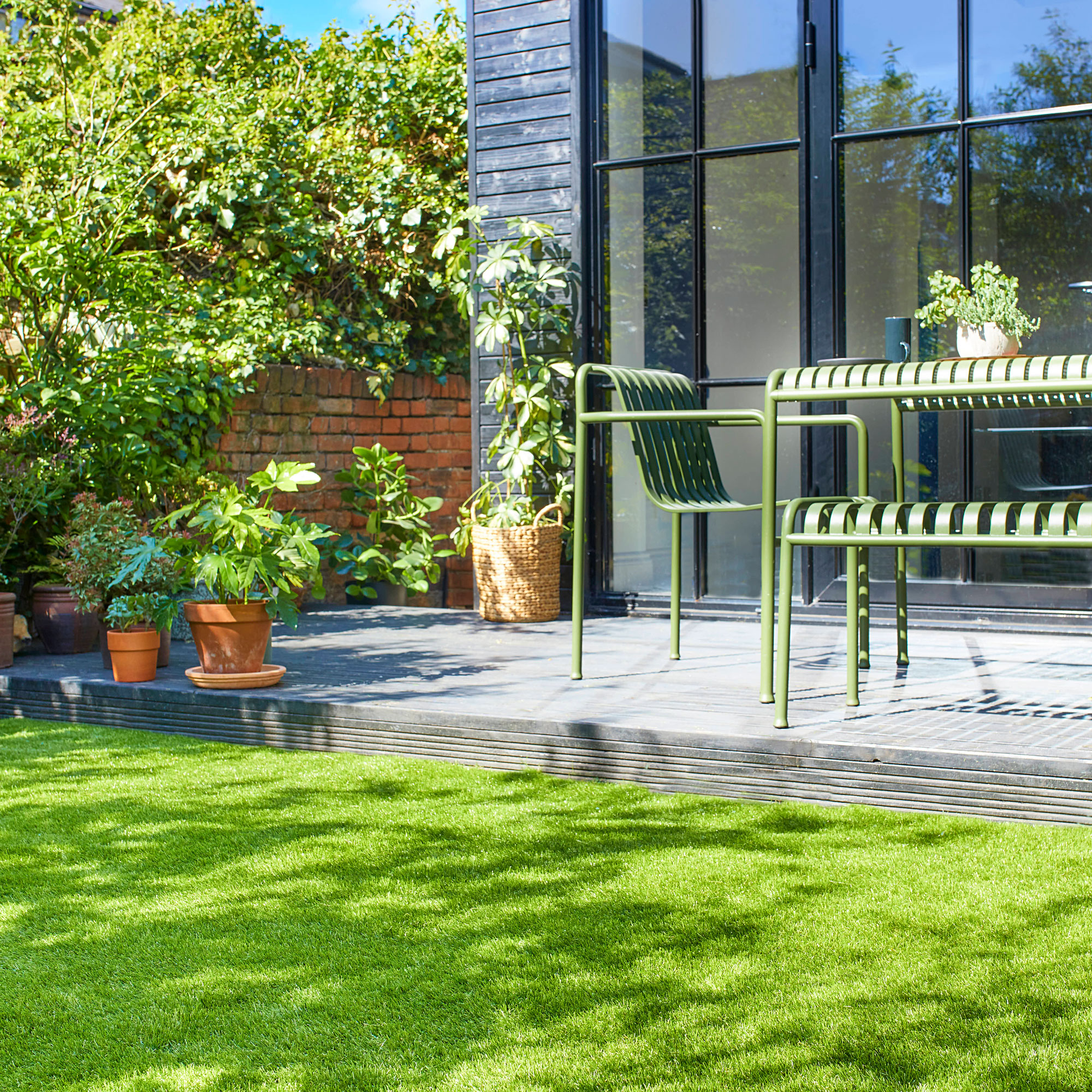
If you're part of the fake grass club, you'll want to learn how to clean artificial grass properly to keep it in tip-top condition. Artificial grass is a popular choice for modern lawn ideas; little maintenance, and no yellow or brown patches when we've had a dry spell. But little maintenance doesn't mean no maintenance.
Fake grass can do a really good job of imitating real grass. Modern firms make artificial grass from polyethylene and add infill so that it will remain upright, so you don't need to worry about it losing its shape after the installation period. But what's the point in investing in a lovely lawn of fake grass if it's not going to stay well groomed all year round?
There are a few tricks that will keep your artificial grass in tip-top condition, and remove any stains if the pets have been getting a little too comfortable on the lawn. Our guide will tell you everything you need to know about how to clean fake grass, so get ready to get your outdoor space back to its original shiny condition.
How to clean artificial grass
Now is the best time to learn how to clean artificial grass to ensure it looks lush and green next to your decking ideas in time for summer. According to Lazy Lawn the average lifespan of artificial grass ranges between seven and 15 years. That's with regular cleaning to keep it well-maintained.
Although you don't have to mow an artificial lawn (removing this garden chore is a big bonus!), that doesn't mean you don't have to lift a finger to keep it in prime condition. Follow our guide on how to clean fake grass to ensure it stays looking healthy and lasts longer.
What you'll need
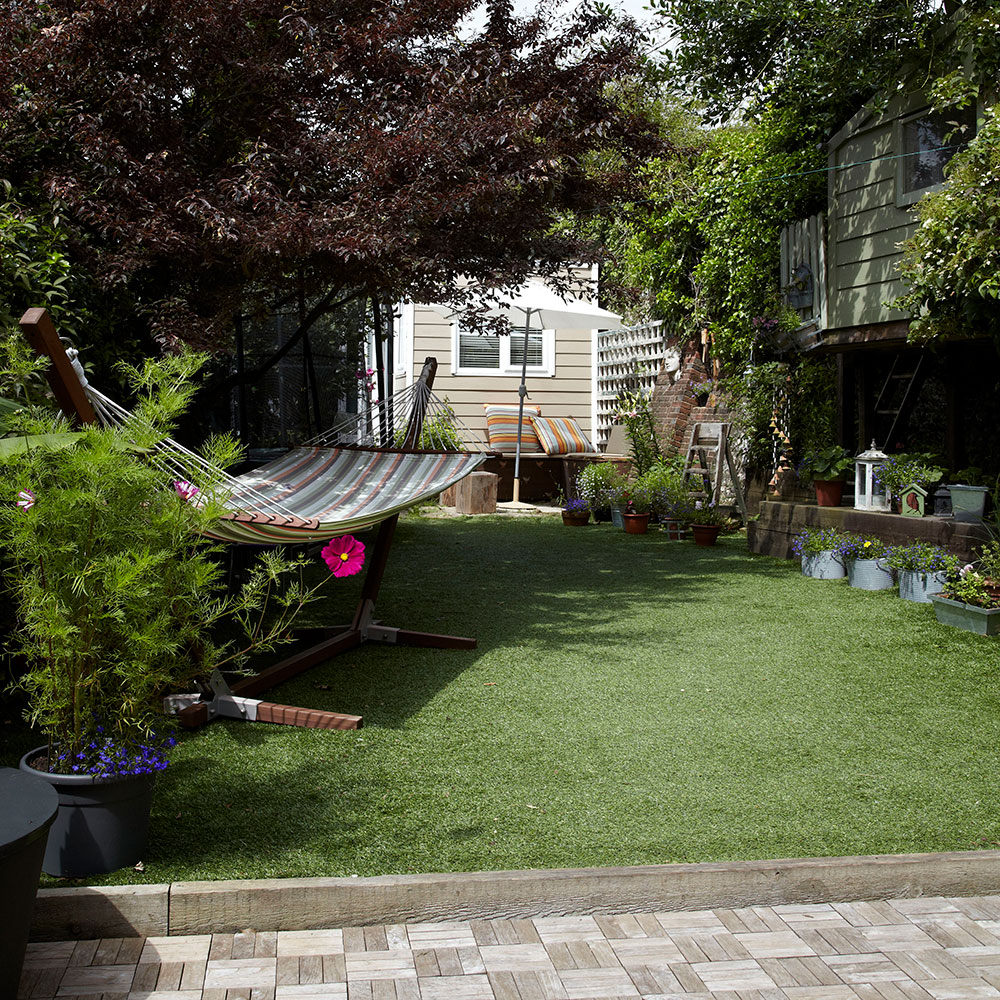
Step-by-step
1. Brush regularly
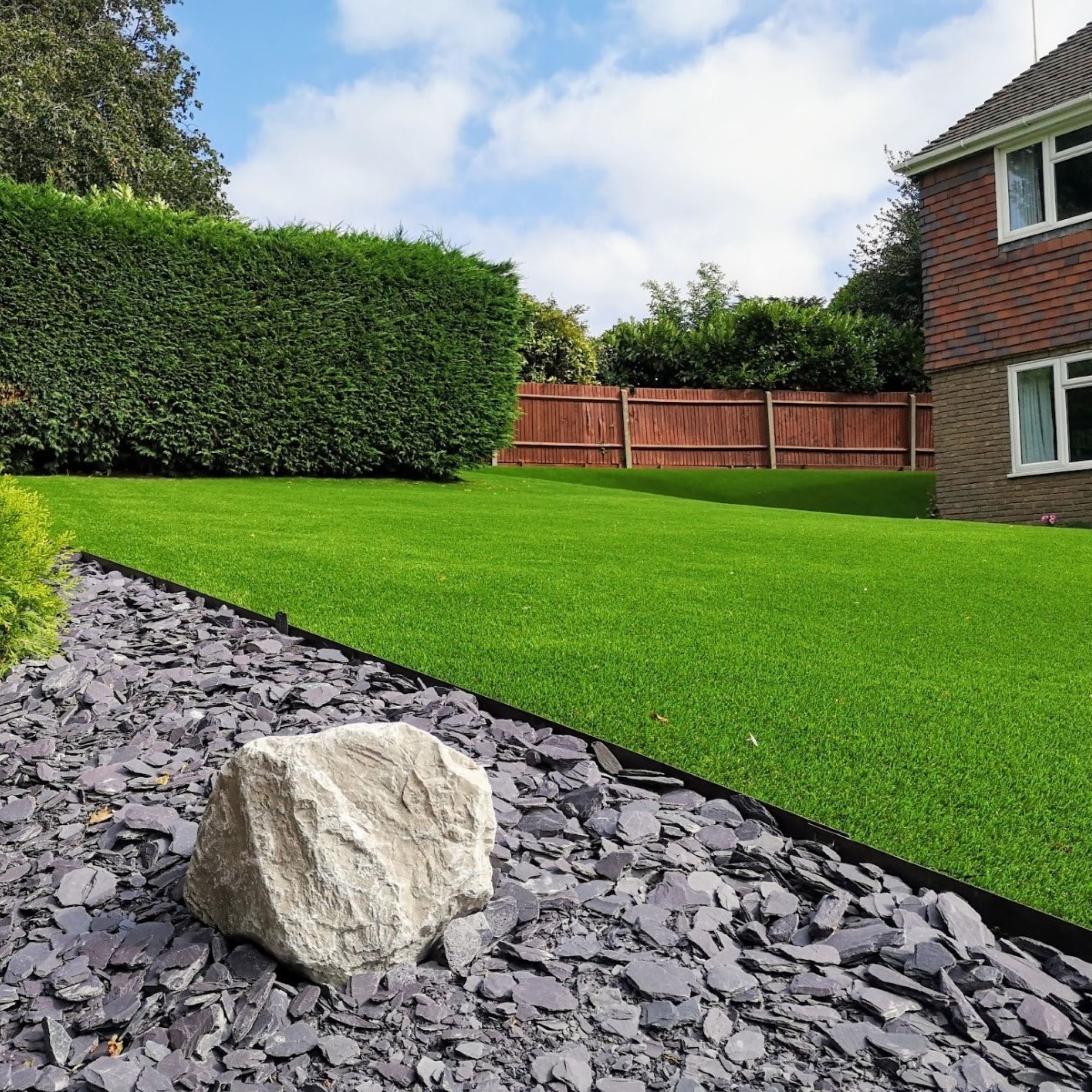
A lot of artificial grass is installed with sand infill, which ensures the artificial blades stand up in an upright position. It's a good idea to brush your fake grass regularly to re-distribute the infill and restore the blades to an upright position.
Garden and driveways company Marshalls recommends brushing an artificial laid lawn with a stiff artificial bristle broom like this heavy-duty outdoor brush from Amazon or a specialist artificial grass grooming rake like this Pelle & Sol Garden Rake from Amazon. Doing this will help the infill to do its job correctly. Under no circumstances should you use metal or wire bristles as these can damage the grass fibres.
2. Wash with a hose
Spraying down an artificial lawn with a hose will remove dust, dirt, pollen and other airborne pollutants. If you don't have a hose, mix a bucket of warm water with eco-friendly washing-up liquid or a detergent like Envii Astro Fresh from Amazon. Using a brush, work this into the fibres of the grass and let it sit for a few minutes.
'It’s super important that the detergent or soap you use is safe for plastic and isn’t harmful to wildlife – just be sure to double-check the label,' says Johanna Constantinou, Brand and Communications Director, Tapi. 'Then, using a hosepipe, or buckets of fresh tap water, rinse off the turn and allow it to dry in the sun.'
3. Remove leaves and weeds
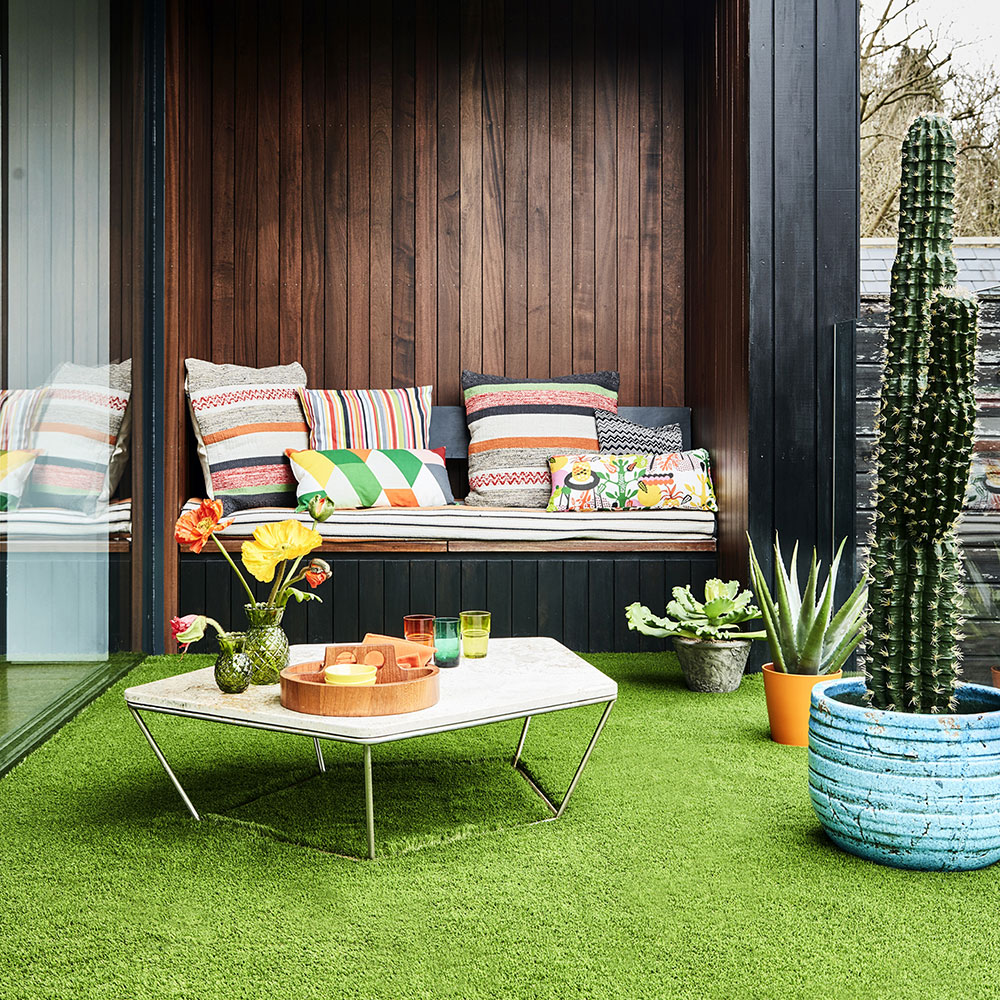
During autumn, leaves and twigs will blow on an artificial lawn which could encourage weed growth. Remove the debris regularly with a stiff broom, grass rake or one of the best leaf blowers. Again, under no circumstances use metal.
If the artificial grass has been installed correctly weeds will not grow through. However, airborne seeds may nestle within fibres and grow on the surface, especially around the edges of the grass membrane. Because any weeds that germinate will be on the surface level of the lawn, they can be easily removed by hand.
Moss is another common fake grass pitfall which can be avoided by applying a water-based weed killer like Weedi from Amazon, with a sprinkler-headed watering can twice a year.
4. Clean up food spills immediately
BBQ sauce, coffee and wine spills on artificial grass are an easy cleaning job. Blot spilt liquids with a paper towel.
Clean the fibres as you would a carpet, using a mix of detergent and water. Cleaning up food spills as soon as they occur can help to reduce the threat of staining. You can remove any stains left ingrained with a toothbrush.
How to clean up pet mess from artificial grass
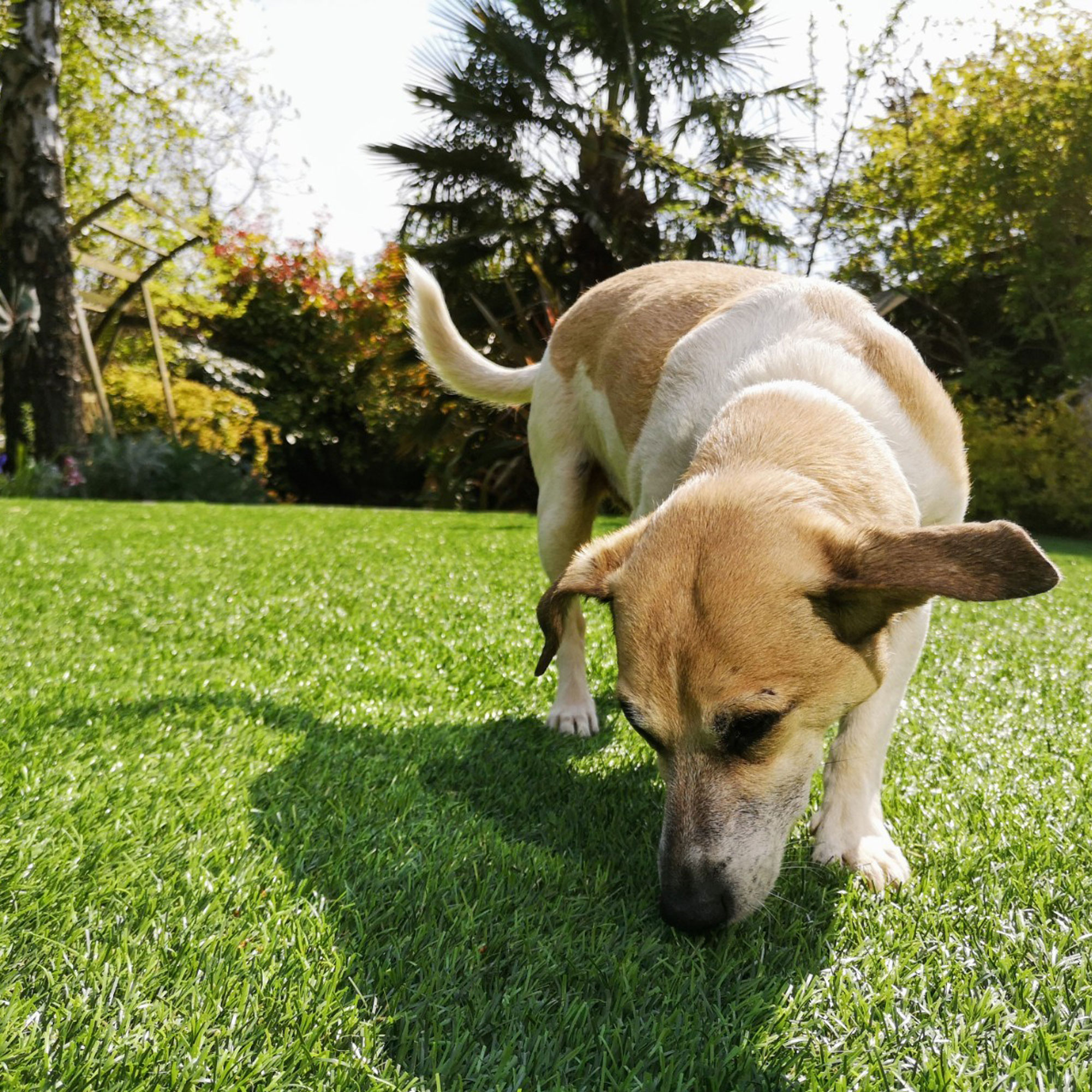
To learn how to clean fake grass after the pets have done their business on it, follow these easy steps:
- Firstly remove and dispose of any hardened faeces. The quicker you do this, the better, so it doesn't have time to settle.
- Fill a bucket with lukewarm water and mix with a teaspoon of washing-up liquid.
- Rinse the affected area straight away to clean the stain.
- Hose the area down further with a water hose to remove the remaining odours and wash away the detergent.
'If you do have pets, then a shorter pile length is the best option,' advises Johanna.
'To attempt to manage the space, you can train your dog or cat to do their business in a specific area of the garden - this will just help with the general maintenance of your garden space.'
How to clear snow and ice from fake grass
To remove a light dusting of snow from an artificial lawn sweep with a brush or rake to a corner and remove with a plastic shovel.
To remove inches of snow, remove the top layer with a plastic shovel. Leave behind approximately one inch and remove as above.
FAQs
How often should you clean fake grass?
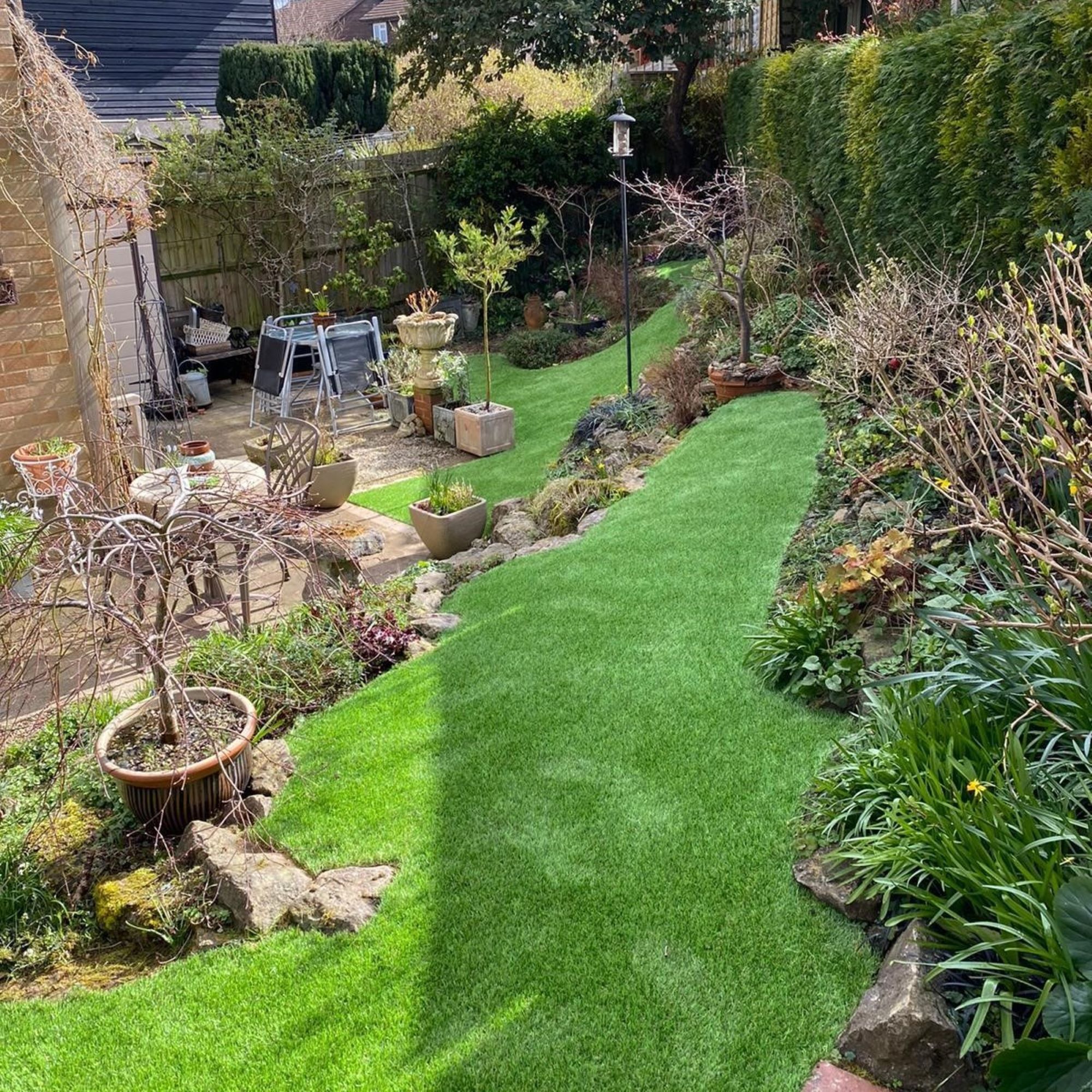
'To keep on top of artificial grass, you should give it a weekly brush,' says Johanna from Tapi. 'During Autumn you might need to brush it more frequently as the trees shed their leaves. When it comes to deep cleaning artificial grass, every four weeks or so should be fine under normal circumstances.'
'It’s easy to neglect your fake grass, as it keeps its colour really well, so often looks ‘well’ for longer,' adds Harry Tregoning, Founder, Tregoning Property & Tregoning Maintenance. 'Environmentally though, it’s important to maintain it - for hygiene reasons as well as how it looks. Keeping on top of this really means that maintenance can become a once-a-week job - but fortnightly would certainly suffice.'
Can you pressure wash artificial grass?
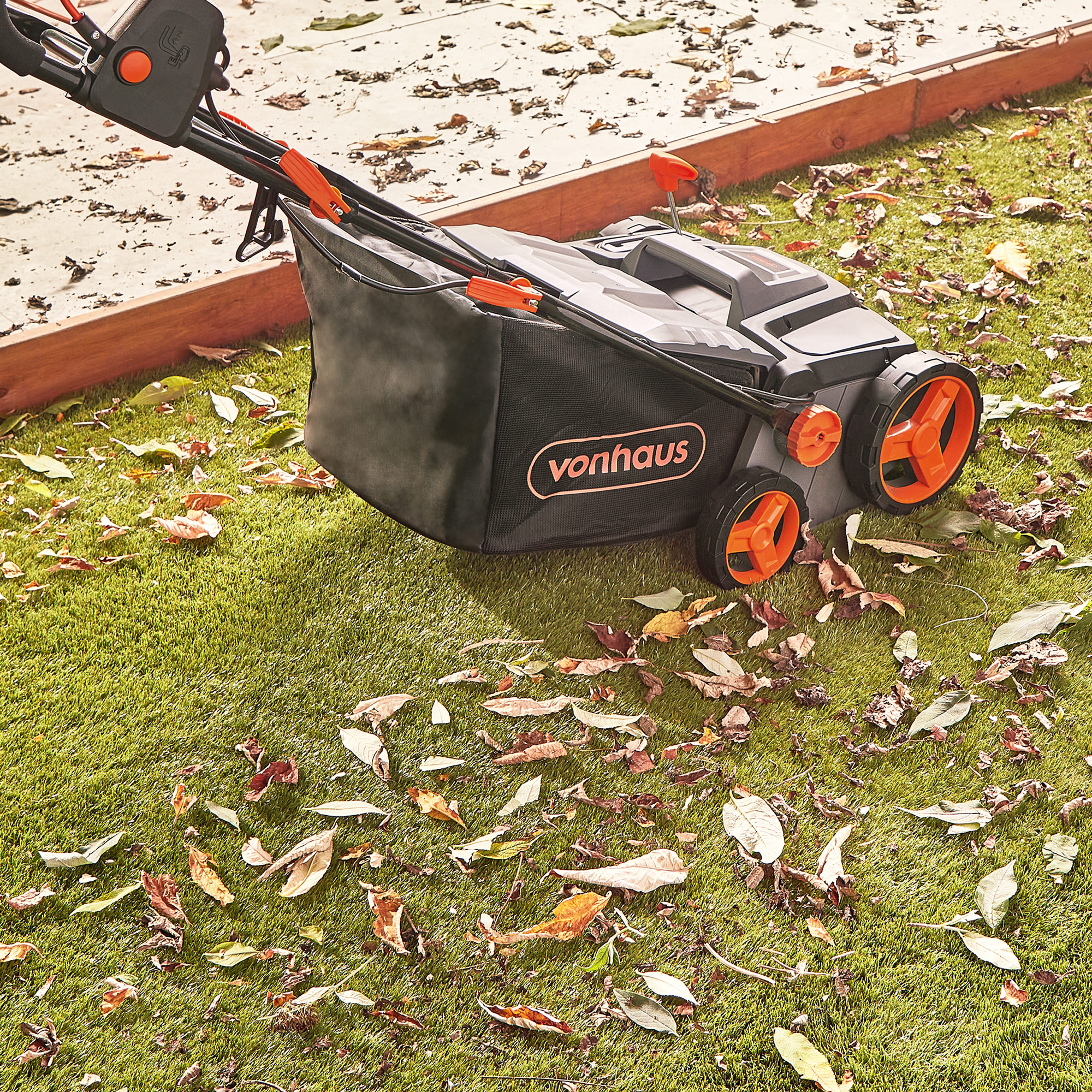
Whether or not you can use your pressure washer on fake grass depends on whether the grass has infill. Infill is any product that is placed between the blades when the grass is installed, usually to weigh down the turf and prevent it from flattening.
'If your artificial grass has infill then you cannot pressure wash it as this is what creates the soft, cushioning feeling to the turf,' explains Johanna. 'It’s far too easy for the pressure washer to remove the infill and it can jeopardise the integrity of your turf.'
'If your artificial lawn doesn’t have infill, then you can use a pressure washer,' she goes on. 'However, we recommend using the widest-angle tip you have, spraying at a shallow angle to help prop the fibres up, and most importantly, keeping the tip of the wand at least 30cm from the ground.'
If you aren't sure whether or not your artificial grass has infill, contact your supplier/ installer and they will be able to tell you.
Sam Baylis, salesman and surveyor for Artificial Lawn Company adds, '(Infill) can of course be re-applied, but it is much easier to maintain the lawn with either an electric power brush (like Vonhaus 1800W Artificial Grass Brush) or more simply a stiff bristle broom or leaf blower.'
'If you have spilled a sticky drink on it or have a pet that likes to go to the loo on the grass, then avoid any harsh cleaning chemicals and just use some diluted Jeyes fluid from Amazon and a gentle hose down for best results. For pet cleaning and sanitation, we recommend any enzyme-based cleaners from Top Dog Turf.'
Can you clean artificial grass with washing-up liquid?
'Washing up liquid will do no harm but might not be strong enough to get rid of the smell and clean it thoroughly,' says Harry. 'Some people use vinegar mixes but there are some ready-made, grass-specific products designed for this use and although they are more expensive, they do a thorough job.'
Artificial grass cleaners like Fabulosa Artificial Lawn Disinfectant and Deodoriser in fragrance Lavender, £3.99 will definitely do the trick and get your fake grass looking as good as new.
Will dog urine ruin artificial grass?
Sam Baylis, salesman and surveyor for Artificial Lawn Company says: 'No, dog urine will not ruin artificial grass. When installed properly, the lawn has adequate drainage that allows the urine to pass through and drain away in the same way that it would a natural lawn.'
'That being said, for best results the installation is normally slightly different in the subbase and membrane position. Different grasses can also be used which are more permeable again to reduce any risk of smell buildup.'
'If your pet prefers to use a particular area on a regular basis, then an enzyme-based cleaner should be used for best results. Alternatively, a bit of Jeyes fluid and a gentle hose down every now and again is more than enough to keep the area clean and free from smells. And unlike natural grass, which can get discoloured when used regularly by a dog, the green pile does not lose any of its colour.'







